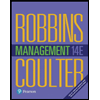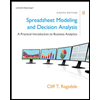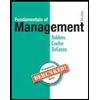Are the arguments for and against using this technology to surreptitiously change the consumer’s intention, attitude, and purchase patterns in the reading below? Are there differences between positive versus negative empathy use? Please Explain.
Are the arguments for and against using this technology to surreptitiously change the consumer’s intention, attitude, and purchase patterns in the reading below? Are there differences between positive versus negative empathy use? Please Explain.
Chapter1: Taking Risks And Making Profits Within The Dynamic Business Environment
Section: Chapter Questions
Problem 1CE
Related questions
Question
I have attached a reading and I need help with the following:
- Are the arguments for and against using this technology to surreptitiously change the consumer’s intention, attitude, and purchase patterns in the reading below?
- Are there differences between positive versus negative empathy use? Please Explain.

Transcribed Image Text:An Ethical Dilemma *
Kenta was hired as a marketing analyst on the consumer behavior team to analyze
data for clients at Emotions Analytics Corporation (EAC). EAC is an artificial
intelligence (Al) firm specializing in analyzing consumer data. The company was
founded by a group of PhD marketing consumer behaviorists who were experts in
the fields of consumer decision making, product-consumer involvement, attitude-
changing behavior, emotion, and empathy-driven decision making. They had
become incredibly successful over five years of business as client companies
started giving them access to millions of data points of past and real-time data.
yielding thousands per consumer.
For each consumer on file, they had created a profile of purchases, online activities,
and chat room interaction, as well as social media data, EAC's most popular product
was its empathy algorithm (EA-1).
The firm's objective to clients is leaming, retaining, servicing, nurturing, and adding
value to them and their customers. The EA-I had the capacity to significantly interact
with and change the following positive empathies in consumers: joy, gratitude,
serenity, hope, pride, altruism, contentment, and optimism. With this tool, EAC could
change a consumer's attitude, intention, and behavior toward a product, brand, or
company, Predictive behavioral changes varied by customer psychological profile.
length of data point time, and data variety. Prediction rales also vary by attitude,
intention, and behavior.
Because of its success, EAC wanted to develop EA-I further, so it created a new
version called EA-Il that was assigned to Kenta and a team of six others. The new
empathy algorithm was to be focused on negative empathies such as disgust, fear,
anger, sadness, rage, loneliness, melancholy, and annoyance. The service would be
marketed to the same client firms. The group's assignment was to analyze past data
to help increase intention, attitude, and behavioral prediction rates. Recently, EAC
had purchased approximately one zettabyte of data from the number one social
media network in the world, SnapBook, that it used for the project.
to.
As the EA-Il team was discussing strategy. Kenta asked Ann, the team manager, a
question.
*Aren't we really doing something negative here? We're manipulating people's
emotions. I mean, couldn't this cause people that are predisposed to depression to
be more depressed, for example?" said Kenta. "What happens when the
competition finds out what we're doing? Or the public?"
Others started to murmur in agreement when Ann interjected. "First, the same
argument could be used for our positive algorithm as well. That hasn't happened.
and EAC has been in business for five years. It has more than 1,000 highly paid
employees, plus the company has no plans to go public. That's in our credo. Also.
who's going to say anything? Each of you are being paid well, and you have a five-
year noncompete clause for that express purpose. Employees who have left have
been unsuccessful in their careers."
Kenta knew he had just painted a target on his back. Later that week, while he was
dining at a restaurant, he was approached by a couple who represented SnapBook
who offered him a job at three times his current salary. If he could entice others from
the EA-Il team to join, he would get a very large bonus for each recruit.
"But what about my five-year noncompete clause?" he argued.
"SnapBook is a social media company, not an Al company, so the noncompete
clause does not apply. If EAC tries to take us to court, this will be our argument."
Kenta knew litigation of this sort took years. Later that evening. Kenta received a
text message from a team member who had spotted Kenta talking with the
SnapBook representatives. His leam member wanted to know what Kenta was up
Expert Solution
This question has been solved!
Explore an expertly crafted, step-by-step solution for a thorough understanding of key concepts.
This is a popular solution!
Trending now
This is a popular solution!
Step by step
Solved in 4 steps

Recommended textbooks for you

Understanding Business
Management
ISBN:
9781259929434
Author:
William Nickels
Publisher:
McGraw-Hill Education

Management (14th Edition)
Management
ISBN:
9780134527604
Author:
Stephen P. Robbins, Mary A. Coulter
Publisher:
PEARSON

Spreadsheet Modeling & Decision Analysis: A Pract…
Management
ISBN:
9781305947412
Author:
Cliff Ragsdale
Publisher:
Cengage Learning

Understanding Business
Management
ISBN:
9781259929434
Author:
William Nickels
Publisher:
McGraw-Hill Education

Management (14th Edition)
Management
ISBN:
9780134527604
Author:
Stephen P. Robbins, Mary A. Coulter
Publisher:
PEARSON

Spreadsheet Modeling & Decision Analysis: A Pract…
Management
ISBN:
9781305947412
Author:
Cliff Ragsdale
Publisher:
Cengage Learning

Management Information Systems: Managing The Digi…
Management
ISBN:
9780135191798
Author:
Kenneth C. Laudon, Jane P. Laudon
Publisher:
PEARSON

Business Essentials (12th Edition) (What's New in…
Management
ISBN:
9780134728391
Author:
Ronald J. Ebert, Ricky W. Griffin
Publisher:
PEARSON

Fundamentals of Management (10th Edition)
Management
ISBN:
9780134237473
Author:
Stephen P. Robbins, Mary A. Coulter, David A. De Cenzo
Publisher:
PEARSON